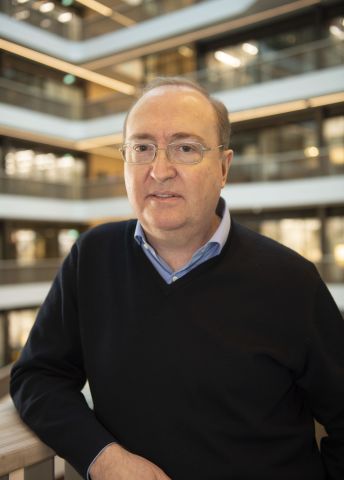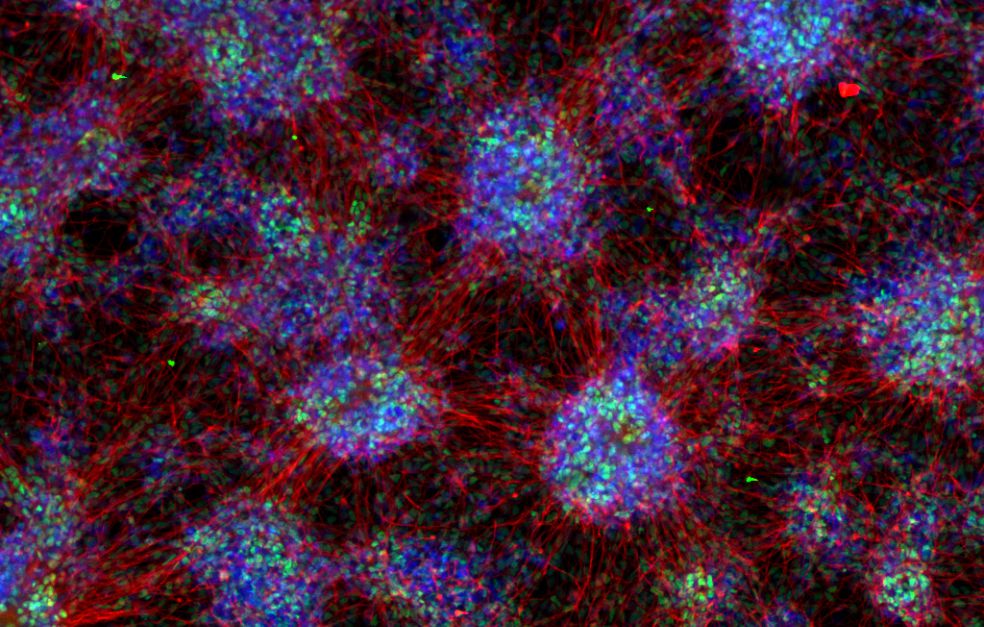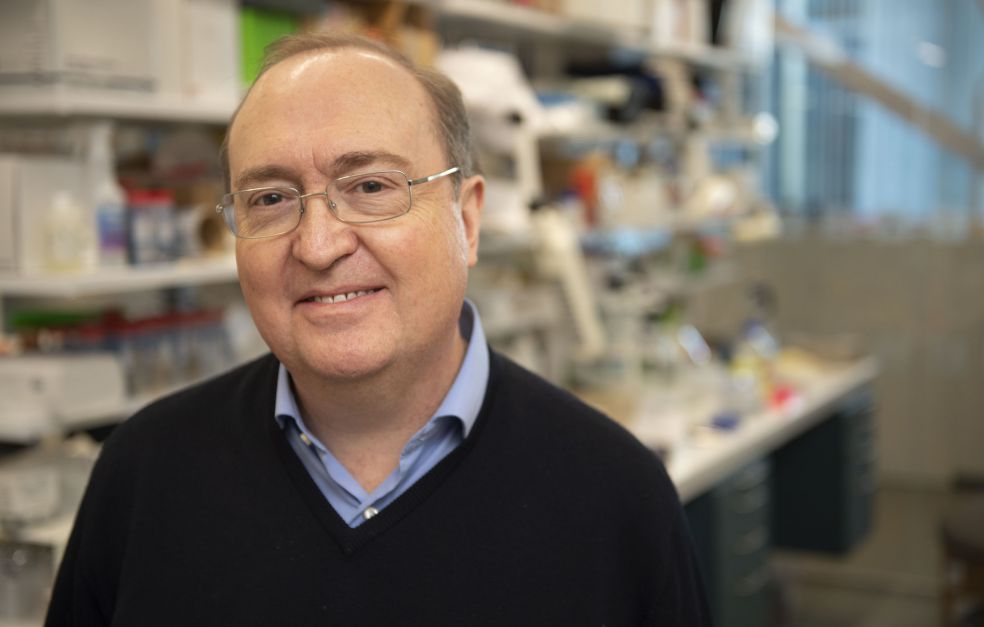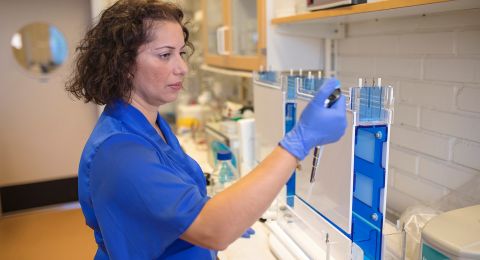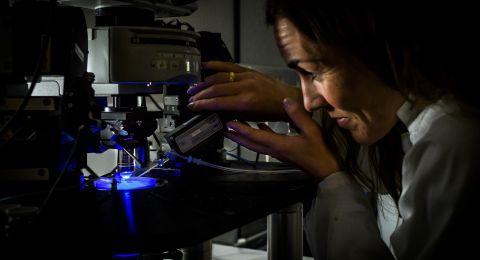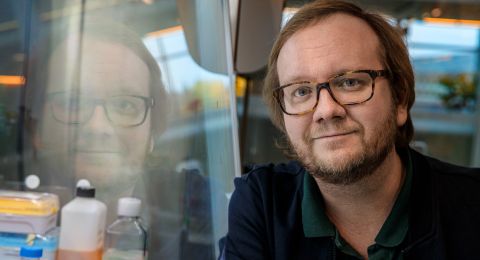Parkinson’s disease slowly kills cells producing dopamine in part of the brain. At present there is no cure or treatment to slow down the disease, but new strategies offer hope for the future. Ernest Arenas is developing techniques for programming brain cells in a groundbreaking research project.
Ernest Arenas
Professor of Molecular Neurobiology
Wallenberg Scholar
Institution:
Karolinska Institutet
Research field:
Dopamine neurons in the midbrain. Parkinson’s disease, particularly stem cells and direct reprogramming of cells for cell replacement therapy and therapeutic discoveries.
Some 20,000 people in Sweden are living with Parkinson’s disease; there are about 10 million sufferers throughout the world. Parkinson’s is a neurodegenerative disease caused by genetic and environmental factors. Dopamine-producing neurons in the brain are broken down and destroyed, giving rise to characteristic motor symptoms, such as tremor, muscle stiffness, and slowing of movements. Patients may also experience impaired balance, speech and automatic movements, sleep disturbances, depression and thinking difficulties.
Ernest Arenas is professor of molecular neurobiology at Karolinska Institutet, and became interested in researching the brain at an early age.
“I’ve always been eager to learn more about the human brain. My interest in Parkinson’s has grown over time. There’s so much that needs to be explored, and many patients in urgent need of help.”
A mysterious disease
There are still no drugs that cure or slow down the progression of Parkinson’s disease. The focus is instead on treating and alleviating the symptoms. Much of what causes the disease remains shrouded in mystery. Arenas elaborates:
“It’s a complicated disease, governed by a multitude of factors. We know that about ten percent of cases have genetic causes, but that still leaves the vast majority – ninety percent – without any known cause.”
Arenas is currently involved in a project exploring the causes of the disease. As a Wallenberg Scholar, however, he is concentrating on studies that may yield more immediate benefits for sufferers.
“The Wallenberg Scholar grant gives us a fantastic opportunity to realize a project I have been thinking about for many years. It’s a dream come true. Being chosen as a Scholar is also an acknowledgement that brings great responsibility.”
Parkinson’s disease is often far advanced when the first symptoms appear – some 70 percent of the dopamine-producing brain cells may already have been destroyed. The idea is therefore to develop therapies capable of not only alleviating symptoms, but also capable of slowing or even reverting the course of disease, such as cell replacement therapy.
“We want to develop new brain cells for patients by making use of completely new molecular information and new strategies.”
Promising techniques
Earlier studies have shown that it is possible to successfully transplant dopamine-producing cells from aborted fetuses in Parkinson’s patients and alter the course of the disease. But technical, ethical and other considerations have slowed that research.
“Using those cells naturally raises difficult ethical issues. Another problem is that it is impossible to produce large-scale quantities of cell preparations having the standardized high quality needed for cell therapy.”
New techniques are needed. Arenas is now endeavoring to identify a combination of genes that control the development of dopamine-producing neurons in a specific part of the brain called the substantia nigra (“black substance”). This is the area of the brain primarily affected by Parkinson’s disease.
New sequencing technologies and the ability to isolate individual cells have resulted in radically new ways of analyzing all the genes expressed in a cell. Using these methods, scientists can define cell diversity in a tissue in a highly detailed manner.
“Until recently we could only see the information as a whole forest, but now we can focus on individual trees. Single-cell analysis provides an unprecedented volume of new information, allowing for the generation of multiple testable hypothesis, new knowledge and therapeutic opportunities – it’s a fantastic technological development.”
Different ways of forming neurons
These new advances enable the researchers to develop methods of controlling the formation of the special neurons they want to create. One method is based on differentiating human embryonic stem cells into progenitor cells, which can be transplanted. These cells are already quite specialized, but the researchers preprogram them so they develop into more specialized dopamine-producing neurons, like those present in the substantia nigra, after transplantation.
The second method does not require a transplant. Instead the researchers use a technique to reprogram some of the support cells in the brain, known as astrocytes.
“In Parkinson’s disease, as dopamine-producing neurons disappear, the number of astrocytes increases, and these support cells are a suitable target for us to use.”
The method involves astrocytes expressing transcription factors that change their identity so they become dopamine-producing cells instead.
“It’s like putting a new conductor in front of an orchestra – using these few genes we can get the whole orchestra to play as we want, as a dopamine-producing neuron.”
One advantage of this treatment is that it does not involve collecting cells from other individuals and requires less or no immunosuppressive medication, which is otherwise needed when cells are transplanted from a donor.
Exciting times
The new methods may also be of use in other branches of medical research.
“The same technical strategies can be used for other diseases, such as diabetes or other neurodegenerative conditions.”
Arenas stresses that although the methods have been tested on animals, there is still a long way to go before the results will benefit Parkinson’s sufferers.
“Our primary aim is to develop a strategy at experimental level that can then be pursued to the point of clinical studies. The current research is testing the very limit of our knowledge. These are exciting times indeed.”
Text Nils Johan Tjärnlund
Translation Maxwell Arding
Photo Ulf Sirborn, Kaneyasu Nishimura, Faktabruket
